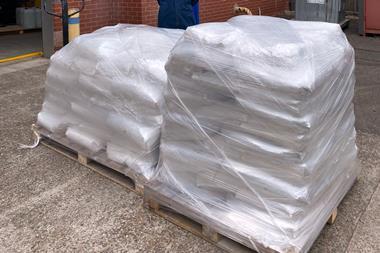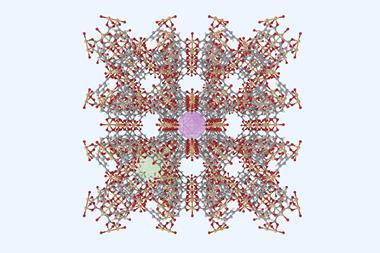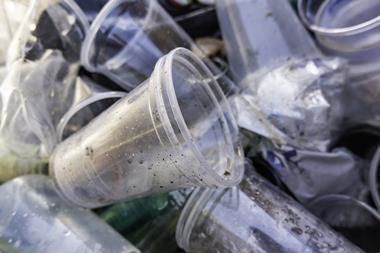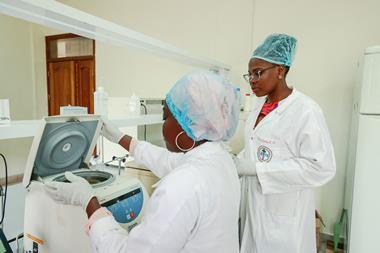Readers share memories of home chemistry and concerns about carbon capture, and more
A lab in the home
Simon Angerer’s story of performing experiments in his garden shed resonated with me.
One Christmas I opened a large rectangular present to encounter a gift that would have a lasting effect on me as a 12-year-old boy. It was a Thomas Salter chemistry set.
It contained such chemical delights as iron filings, sulfur, calcium oxychloride, a carbon rod – or two – and some copper sulfate.
Along with these were a methylated spirit burner, some test tubes, rubber hose, glass rod and corks of various sizes. But no safety glasses or gloves.
Needless to say, I was hooked. After getting to grips with the standard experiments in the kit I decided to do my own experimenting, with some household products that I found in my parent’s kitchen, such as vinegar and bleach, having also procured a lab coat, some safety glasses and Marigold gloves for my own protection.
I always opened a window or door to ensure adequate ventilation, just in case of an unexpected reaction.
This kit fired a fascination with chemistry for me, which – so far – has lasted 36 years as a professional manufacturing chemist.
My chemistry set is now rather larger, as I often work with vessels of 500–9000 litre capacity.
I no longer perform any chemistry experiments in my own kitchen.
I think that most of the chemicals that were in that kit of mine are no longer in the experiment kits for the current generation.
Nostalgia indeed.
Robert Williams MRSC
Via email
NMR letters
It is over 50 years since I was a chemistry undergraduate and I have had very little indeed to do with nuclear magnetic resonance (NMR) since. Even so, a question mark arose in my mind when I read in the letter by Anastasios Varvoglis that ‘tau, as lower case τ, was used instead of δ in the early days of NMR’. It is very well known that in measures of chemical shift in NMR (units ppm) τ and δ are the same scale running in opposite directions, so the issue goes beyond choice of a single Greek letter.
Probably the most invariant Greek letter for use in science and mathematics is π. One would not use lower case π for any other quantity. In a review of one of my own textbooks from about 20 years ago, I am mildly criticised for use of σ instead of ρ for density.
Clifford Jones FRSC
University of Chester, UK
Carbon capture constraints
In reference to your article ‘Green light for UK carbon capture projects – but will they deliver?’, governments often favour large-scale projects and high-profile announcements, but these don’t always deliver the best results. The current emphasis on carbon capture and storage (CCS) facilities is a case in point.
While CCS seems promising in theory, with its claims to offer low-carbon energy and hydrogen production, it has crucial drawbacks. CCS is expensive, energy-intensive and carries a high risk of significant underperformance, and in any case cannot capture the emissions from extracting and transporting gas.
This is especially true as energy and hydrogen CCS facilities will depend heavily on imported gas, particularly liquified natural gas (LNG). Producing and transporting LNG generates substantial methane emissions, undermining any environmental benefits.
It’s time to reconsider and explore more effective alternatives. One such solution already exists: a major expansion of renewable energy and energy storage systems. This approach would quickly reduce our reliance on imported gas, the emissions associated with it and the price spikes that result from gas dependency. We should accelerate the development of proven energy storage technologies. Pumped hydro-storage, for example, can effectively manage excess renewable energy.
Rather than focusing on complex and risky CCS projects, we should prioritise sustainable solutions that benefit both the environment and the economy.
Dave Evans FRSC
Wymondham, UK
Plexiglas v plexiglass
The article ‘Accidental discovery depolymerises commercial plexiglass’ contains one of an editor’s perennial blind spots, namely the spelling ‘plexiglass’. It is in fact a commercial trade name with an odd spelling, ‘Plexiglas’, first registered by Röhm GmbH in 1954, and re-registered several times since. Your correspondent no doubt looked at the ‘Editor’s summary’ of the cited original article by Wang et al. in Science, which also unfortunately referred to ‘plexiglass’, but the authors Wang et al. actually used the correct name ‘Plexiglas’ many times throughout their paper.
Companies are very sensitive to their trade names being bandied about without an initial capital letter, as I recall learning when as editor of The Analyst many years ago I received a pointed letter from Röhm after letting the same error through. It is one that all copyeditors should keep an eye out for, alongside other common misspellings such as ‘phosphorous’ for the element.
Phil Weston FRSC
High Halstow, Kent
Editorial response: Plexiglas is a registered trademark, but the term plexiglass is also a widely used term for this class of acrylic material. In this article, we opted to use plexiglass as the chemistry we were reporting on is applicable to the type of material, not just one specific brand.
Corrections
In ‘The surprising organic chemistry in interstellar space’ (Chemistry World, April 2024, p41), we wrote that the probability of quantum tunnelling depends on distance and particle size. It of course depends on distance, particle mass and the height of the barrier. We apologise for any confusion caused.
In ‘The circles of DNA that cause cancer’ (Chemistry World, April 2025, p24) we mis-spelled the name of Birgitte Regenberg of the University of Copenhagen, Denmark. Our apologies.
The ligand frequently used in transition metal chemistry is not cyclopentadiene, as we stated, but the cyclopentadienyl ligand (Chemistry World, April 2025, p30). Thank you to Neil Connelly for bringing this to our attention.
The colour of lead chromate is yellow, not green as we incorrectly stated (Chemistry World, February 2025, p30). Thank you to John Blanchard for pointing this out.
Chemistry World welcomes letters, which should be concise (normally fewer than 300 words) and timely. Those selected for publication are subject to editing for clarity and length. Letters should be marked ‘for publication’ and sent to chemistryworld@rsc.org
We do not routinely acknowledge letters.












No comments yet